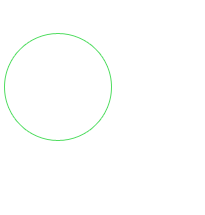Northwest Institute Evidence
In its role as intervenor in the review of the Enbridge Northern Gateway Pipeline proposal, the Northwest Institute for Bioregional Research submitted the following three reports as evidence to be considered by the Joint Review Panel.
Hillslope and Fluvial Processes Along the Proposed Pipeline Corridor
This paper by James W. Schwab P.Geo., Eng.L. provides an overview of the landscape, terrain, hillslope processes and fluvial processes found within the general area of the proposed pipeline corridor across west central B.C. The intent of this paper is to help formulate discussion, encourage more in-depth study, direct more detailed on-the-ground investigation, and stimulate investigation into possible safer alternative routes to the unstable terrain found in west central B.C. This paper does not discuss environmental consequences and risk associated with the proposed pipelines although the environmental consequences of an oil pipeline break do differ considerably from a break sustained by a natural gas pipeline.
Analysis of Skeena River Tributaries Downstream from the Proposed Enbridge Pipeline
Jack A. Stanford, and Diane C. Whited were contracted by the Northwest Institute for Bioregional Research (Smithers, BC) to use existing databases to produce a series of maps describing the geomorphology of tributaries of the Skeena River, British Columbia that will be crossed by the proposed Enbridge pipeline. The objective was to develop and map metrics that delineate the areas of the Skeena River and its tributaries most vulnerable to potential pipeline spills associated with the proposed Enbridge corridor to Kitimat, BC.
Download the report (694kb PDF)
Potential Effects of an Oil Pipeline Rupture on Reach 2 of Morice River
This submission focuses on a portion of the pipeline route that is located adjacent to Morice River, 70 km south of Smithers. Within this area, Morice River has formed a wide floodplain that contains numerous active secondary channels, log jams and wetlands that comprise the core spawning and rearing habitat for Morice River fish populations. Schwab (2011) indicates that slope instability in this area has the potential to rupture the proposed pipelines. This report examines the implications of a pipeline rupture and subsequent clean-up efforts to river processes, fish and fish habitat.

